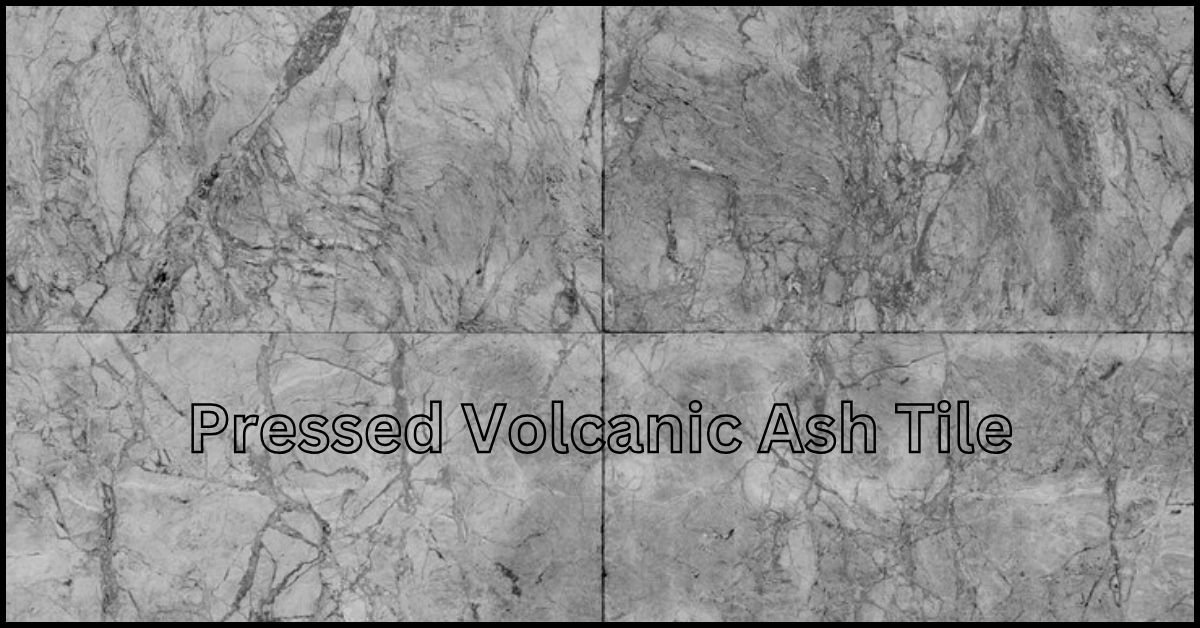As the world increasingly focuses on sustainable living, innovative materials are stepping into the spotlight. One such material that has caught the eye of eco-conscious designers and homeowners alike is pressed volcanic ash tile. This unique flooring option bridges the gap between aesthetics and environmental responsibility, offering a beautiful solution for modern spaces while reducing our ecological footprint.
Imagine walking on a surface that tells a story and supports your commitment to sustainability. Pressed volcanic ash tile does just that, derived from nature’s remnants of ancient eruptions. It invites creativity in interior design without compromising our planet’s health. Are you curious about how this remarkable material can enhance your space? Let’s explore what makes pressed volcanic ash tile an exceptional choice for eco-friendly design enthusiasts looking to make a statement!
Contents
- 0.1 What is Pressed Volcanic Ash Tile?
- 0.2 The Sustainable Benefits of Using Pressed Volcanic Ash Tile
- 0.3 How to Incorporate Pressed Volcanic Ash Tile in Interior Design
- 0.4 Case Studies: Successful Use of Pressed Volcanic Ash Tile in Eco-Friendly Design Projects
- 0.5 Maintenance and Durability of Pressed Volcanic Ash Tile
- 0.6 Alternatives to Pressed Volcanic Ash Tile for Sustainable Design
- 0.7 Conclusion
- 1 Embracing this innovative material allows us to move towards more environmentally conscious living while enhancing our interiors with nature’s artistry. Whether renovating or designing anew, consider the transformative effects of pressed volcanic ash tiles on your space and our planet’s future.
What is Pressed Volcanic Ash Tile?
Pressed volcanic ash tile is an innovative flooring option crafted from the remnants of ancient volcanic eruptions. This remarkable material captures the essence of nature while offering a distinctive aesthetic appeal.
The process begins with collecting natural volcanic ash mixed with binding agents and pressed into molds. The result? A durable tile that showcases unique textures and colors reminiscent of its fiery origins. Each piece carries its character, making every installation genuinely one-of-a-kind.
What sets this tile apart is not just its beauty but also its eco-friendly properties. Using reclaimed materials from the earth significantly reduces waste and promotes sustainable practices in design. With pressing techniques that minimize energy consumption, it offers a greener alternative without sacrificing quality or style.
This versatile material can be used for both residential and commercial spaces, bringing a touch of nature indoors while positively impacting our environment.
The Sustainable Benefits of Using Pressed Volcanic Ash Tile
Pressed volcanic ash tile offers a remarkable array of sustainable benefits. It is made from abundant and readily available natural materials, reducing the need for energy-intensive manufacturing processes.
The production of these tiles emits significantly lower carbon emissions than traditional materials like ceramic or porcelain, making them an eco-friendly choice for environmentally conscious consumers.
Moreover, volcanic ash has excellent thermal properties, providing insulation that can help to decrease energy consumption in buildings. It keeps spaces cooler in summer and warmer in winter.
Another advantage lies in its durability. Pressed volcanic ash tiles resist wear and tear better than many alternatives, which means they have a longer lifespan. Fewer replacements lead to less waste over time.
Being highly resistant to moisture and mold adds another layer of appeal for health-conscious homeowners seeking clean indoor environments.
How to Incorporate Pressed Volcanic Ash Tile in Interior Design
Pressed volcanic ash tile offers a unique aesthetic that can elevate any interior space. Start by selecting a color palette that complements the tiles’ natural hues. Their earthy tones blend beautifully with contemporary and rustic designs.
Consider using these tiles as an accent wall in living rooms or kitchens. This creates a striking focal point while adding texture to your decor.
Pressed volcanic ash can be utilized for flooring or shower walls in bathrooms, providing durability and style. Pair it with minimalist fixtures for a cohesive look.
Due to their resilience against weather elements, these tiles work wonderfully in patios or pathways for outdoor spaces. Layering different sizes and shapes can create visual interest without overwhelming the area.
Don’t avoid mixing materials; combine wood or metal accents alongside pressed volcanic ash for a balanced design approach that feels organic yet sophisticated.
Case Studies: Successful Use of Pressed Volcanic Ash Tile in Eco-Friendly Design Projects
The Eco Hotel in Costa Rica is one standout project using pressed volcanic ash tile. The architects embraced local materials to create a sustainable paradise. The tiles offer aesthetic appeal and provide excellent thermal insulation, minimizing energy consumption.
Another notable example is a modern home in Oregon that prioritizes sustainability without sacrificing style. Here, the sleek design of volcanic ash tiles complements wooden elements while ensuring durability and resilience against wear.
In an urban setting, a community center in New York City showcases how these tiles can transform public spaces. The vibrant hues invite engagement while promoting eco-friendly practices through its construction choices.
These projects demonstrate versatility and innovation in incorporating pressed volcanic ash tile into diverse environments. Each case highlights how this material easily supports ecological responsibility and contemporary design aesthetics.
Maintenance and Durability of Pressed Volcanic Ash Tile
Pressed volcanic ash tile is not only visually striking but also remarkably durable. This material resists wear and tear, making it ideal for high-traffic areas. Volcanic ash’s unique properties contribute to its strength, ensuring that your floors or walls withstand daily challenges.
Maintenance is straightforward. A simple sweep or vacuum removes dust and debris. A damp mop with mild soap does the trick without damaging the surface for deeper cleaning.
Pressed volcanic ash maintains its integrity over time, unlike some tiles that require sealing. Its natural resistance to moisture prevents mold growth and stains.
Additionally, minor scratches can often be effortlessly buffed out, keeping your surfaces looking fresh for years. With proper care, this eco-friendly option remains functional and beautiful throughout its lifespan.
Alternatives to Pressed Volcanic Ash Tile for Sustainable Design
When considering sustainable design, several alternatives to pressed volcanic ash tile offer eco-friendly benefits.
Recycled glass tiles present a vibrant option. They come in various colors and sizes, making it easy to create stunning mosaics while reducing waste.
Bamboo flooring is another excellent choice. This rapidly renewable resource adds warmth and character to any space without compromising the environment.
Cork tiles are also gaining popularity. Harvested from the bark of cork oak trees, they provide excellent insulation and cushioning underfoot.
Natural stone offers durability along with timeless beauty. Sourcing local stone can further minimize environmental impact during transport.
Reclaimed wood brings an element of history into your home. Its unique textures and grains tell a story while promoting sustainability by repurposing materials that might otherwise go unused.
Conclusion
Pressed volcanic ash tile is an innovative material that brings beauty and sustainability to the forefront of interior design. Utilizing a natural resource offers unique aesthetics and significant ecological benefits. This tile not only reduces waste but also promotes responsible sourcing.
As designers and homeowners seek ways to create eco-friendly spaces, pressed volcanic ash presents a versatile option that can be adapted to various styles, from rustic charm to modern elegance. Its durability ensures longevity while minimizing environmental impact.
With successful case studies showcasing its potential, many already embrace this sustainable choice in their projects. The maintenance requirements are manageable, making it an appealing alternative for those wanting style without sacrificing practicality.
There are alternatives available for those exploring other options in sustainable design materials; however, few match the distinctive qualities offered by pressed volcanic ash tile.











